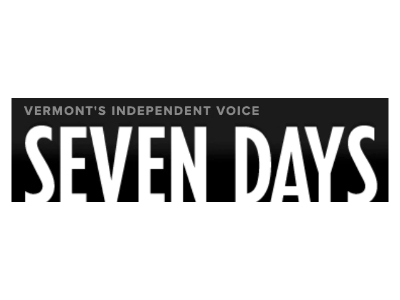
What do you make of a pile of debris that includes old tennis balls, empty beer cans, crushed plastic foam, sodden socks, discarded masks and a gargantuan collection of plastic containers? On a sunny Earth Day on the Church Street Marketplace, the answer was: You build a trash monster. All you need is the help of a Lake Champlain cleanup crew and a handful of small children wielding tongs to artfully place the disgusting throwaways. Over the course of a single hour on Saturday, dozens of volunteers gathered 313 pounds of trash along the Burlington waterfront, then hauled it to the street in front of city hall. There, Vermont artists Annie Caswell, Rebecca Schwarz and Kelly Hickey had created a 10-foot-long, six-foot-tall chicken-wire cage in the shape of Champ, the mythical lake monster. While volunteers sorted and weighed the debris, passersby were invited to help fill the sculpture with trash. Organizers had a name for this collection of polluting discards: the Real Lake Monster. “You can’t look at this trash without connecting to pieces of the debris that you use — whether it’s a lid of a coffee cup or an old lighter or a toothbrush, your single-use straw or your takeout containers,” organizer Ashley Sullivan said as Champ filled up with old milk jugs, coils of soiled plastic rope, dock foam, plastic flip-flops and a dirty white soccer ball retrieved from the shoreline. Sullivan heads the Rozalia Project, a Burlington-based nonprofit that focuses on removing trash from waterways as a way to conserve a healthy marine ecosystem. Rozalia also offers education programs for communities and schools and hosts science expeditions aboard its 60-foot research vessel American Promise, based in Maine. Sullivan said “data cleanups” like Saturday’s — at which all 2,545 pieces of debris were sorted and cataloged — not only show the public the size of the problem but also help spark ideas for combating plastic pollution. The top five items from Saturday’s cleanup were 283 cigarette butts, 282 food wrappers, 208 paper napkins, 182 metal can pieces and 161 plastic drink bottles. “The data is really a critical piece, because it helps tell the story of what the problem is locally, but we can also connect that to global datasets to see the trends,” Sullivan said. Trashy Champ was a new addition to Rozalia’s Earth Day cleanup, thanks to a $2,000 grant from the…
Turning Trash Into Art for an Earth Day Lesson

